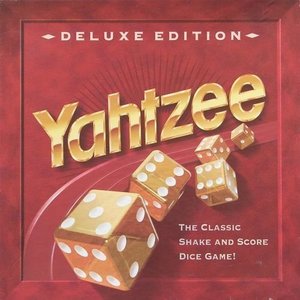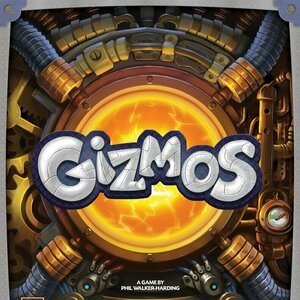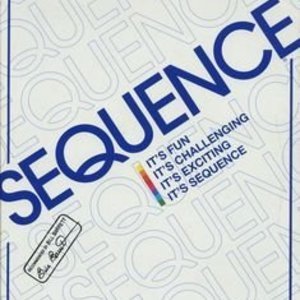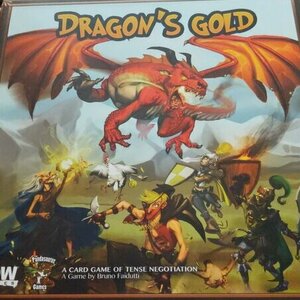
Baseball Highlights: 2045
Tabletop Game
American baseball was on its last legs as a spectator sport. Football had become the predominant...
Baseball Cyborgs Robots Deck Builder

Aristotle's Elements and Space
Tabletop Game
Aristotle’s Elements and Space is a Greek themed, interactive card game that is fun for the whole...
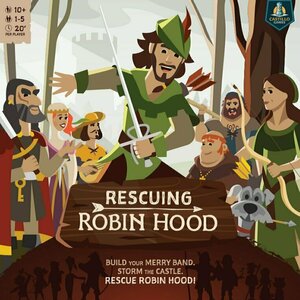
Rescuing Robin Hood
Tabletop Game
Rescuing Robin Hood is a collaborative deck-building game that takes 45-60 min and plays 1-5...

Lost Ruins of Arnak: Expedition Leaders
Tabletop Game
Return to the mysterious island of Arnak in Lost Ruins of Arnak: Expedition Leaders! Give your...
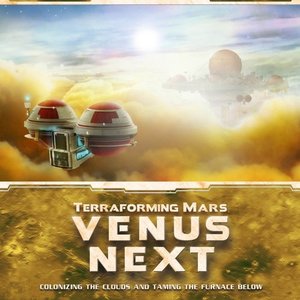
Terraforming Mars: Venus Next
Tabletop Game
Venus. a very deadly world. but it has potential! Up among the corrosive clouds, far away from the...
Purple Phoenix Games (2266 KP) rated Gizmos in Tabletop Games
Apr 20, 2021
Gizmos is a card drafting, energy collecting, engine building game about, well, building engines. Players will be attempting to draft machine parts from an offer pyramid and build them onto their master jalopy machine using energy marbles in order to chain actions together and maximize their turns. The victorious player is they that claims the most VP from cards and bonus VP tokens at the end of the game.
To setup, assemble the energy dispenser (the marble gumball machine looking component) and place it on the table. Fill it with all the marbles and marvel at the first six that come out into a chute display. Separate and shuffle the card decks by their backs and set out four cards of level I, three cards of level II and two cards of level III. Determine starting player and give them the starting tableau board. Each player will receive a tableau board, an energy ring, and a starting gizmo to be placed under the File section of their board. The game may now begin!
On a player’s turn they will be completing one action from the four actions printed on their player board: File, Pick, Build, and Research. The File action is used when a player chooses a card from the gizmo pyramid (from any level) and places it in their Archive – an imaginary area to the right (or even above I’ve found) their player board. At the beginning of the game players will be able to hold just one gizmo in their Archive, but as they draft and build Upgrades, this number can increase. When choosing the Pick action, the player will simply choose one of the energy marbles from the dispenser chute and place them in their energy ring. Initially rings are only able to hold five marbles, but this also can be increased on future builds. To Build a gizmo into a player’s machine, the player will spend a specific color and number of energy marbles printed on the chosen gizmo card to place the card into their player tableau. These gizmos could possibly be Upgrades, energy Converters, or upgrades to the File, Pick, and Build actions. Pay the energy marble to the dispenser supply. Players will choose to Research when they do not like the gizmos on display in the gizmo pyramid. Researching allows players to draw the top cards from any face-down level deck and choose one to either File or Build.
The game is super simple to this point, but this is where the true strategy and tactics come into play. Though there will always be nine gizmos on display during a player’s turn, the value of these gizmos are in how they are used in the player tableau. Yes each gizmo allows for some benefit, but successful players will be able to utilize these benefits to create chain reactions. When an action is spent to do a thing, gizmos in play in the tableau will sometimes link to the action, or to the placement of a certain type of card, or a certain energy type (color) of gizmo built. It is mastering these chain reactions that creates next-level strategizing and separates the players from the champions. Play continues on in this fashion until a player has built their fourth level III gizmo or their 16th gizmo in total. Count up VP from built gizmos and bonus tokens earned from built gizmos throughout the game to see who wins the science fair (is that what happens at science fairs? People win those, right?)!
Components. So the gizmo cards are fine, and the cardboard components are fine as well. The marbles are interesting and bubbled plastic (or resin, I told you I’m not great at science) and come in great colors. The true star component here is that energy marble dispenser. It is absolutely brilliant. The game comes with assembly instructions, thankfully, but once it’s built, it’s built forever. It packs neatly back into the box, and the insert is very very well done. The artwork on this is surprisingly secondary to me. In fact, I don’t really remember even looking at much of the artwork on the gizmo cards as I was playing because I concentrate so much more on the effects of the gizmos and trying to figure out my next move to really sit and gawk at the art. The iconography takes a little time to get used to, but once you have seen it in action for a few rounds, you catch on quickly. All in all, a fine set of components, but with the insert and dispenser, now a great set of components.
I adore this game! I love engine builders, and the chain reactions you can create with your gizmos are excellent and can be very powerful. You can try to generate tons of bonus VP from your gizmos, or concentrate on versatile energy marbles using a bunch of Converters, or simply go guns blazing on everything you can afford to try to blitz to 16 gizmos built. Whatever your play style, Gizmos can certainly allow you to play your way while giving you choices upon choices to make each turn.
With all these positives, I had to find a negative, right? Well, ok, yes, but it’s super minor to me here. I don’t really feel like the theme is very immersive. Not once have I felt like I am building a machine in order to win a science fair, but I do feel like I need to maximize my turn every time in order to grab more energy, or to build better Upgrades and Converters so I can grab any gizmo I want and build it right away. So, theme is there, but not at all strong.
Though the theme is just okay, the game play certainly is stellar. This one has everything I like in an engine building game, and has unique and interesting components. Would I like it more if the theme was different. I doubt it. The game play is just so good that the theme and artwork takes a back seat for me, and that’s super weird for me to type. Should you be looking for a great engine building game that looks awesome on the table, has cool components, and allows you to play differently every game, then go find yourself a copy of Gizmos. Purple Phoenix Games gives it an energetic 21 / 24. Now if only my 4-year-old could keep the energy marbles in the chute or the ring and not on the floor…
Dianne Robbins (1738 KP) created a post
Apr 13, 2019
Sarah (7800 KP) rated Sequence in Tabletop Games
May 31, 2018
It works a little like Connect 4 with cards, but with a lot more detail and thinking involved. And like games like Monopoly, the cards you get are based solely on luck (of the draw/dice) and your strategy is what helps you win. But unlike most strategy games, Sequence is a fairly short one. It doesn’t drag on for hours (unless you spend a long time picking where to place pieces), and it doesn’t get boring. It can get a little frustrating at times, especially when you know you can have nothing to prevent your opponent from winning, but that’s all part of the game.
The only criticism is that despite stating it is for 2-12 players, it’s actually only for 3 players or 3 teams, as there’s only 3 different colours of chips. Whilst I understand that you can’t have a huge amount of players, surely 4 would’ve been a better and more appropriate number of players/teams/colours?
Despite this, it’s still a hugely addictive and fun game to play, I can’t see it getting old any time soon!
Dillon Jacoby-Rankin (202 KP) rated Dragon's Gold in Tabletop Games
Jan 18, 2020
Components: The gems are very good quality of either some sort of plastic or acrylic. They are colored very well except for the silver and gold which can be hard to tell apart depending on how the light hits them. There are limited amounts of each color for different reasons. The cards are nice and the artwork is decent enough but nothing I found to be out of the ordinary that struck me as amazing. The real focus isn't on the cards anyway but the gems.
Easy to Learn: Rules are quite simple. Players will lay down cards until a dragon is defeated. (The strength of the cards is more than the dragon's) then all players involved have a minute to split the loot or no one gets anything. Certain objectives depending on the game being played will make for end game scoring strategies. The mage and thief cards allow for extra bonuses especially when played together.
Quick Turns: Splitting loot only takes a minute keeping the game moving along fairly quickly.
Shields: I feel like the Shields could have been a little taller or something.
